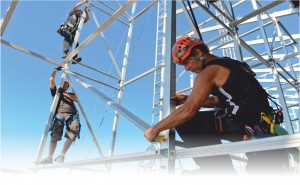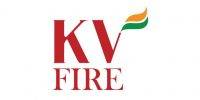 Tip One: Slow Down, or Consider Efficiency Building Alternatives
Tip One: Slow Down, or Consider Efficiency Building Alternatives
This tip is both the most important and the toughest to enforce. Speed is often of the essence when it comes to construction projects, and it's tempting to trust in previous work experience and not think too much about safety concerns. "On any job site, there is this constant balance and compromise. You want to get the job done fast, but you want to do so with minimal risk to workers," said Mike Mumau, President at Kee Safety – North America, a leading global supplier of fall protection solutions. "The real issue is how do you build something in a fast, efficient way, and still be profitable without putting your workers at risk."
But you don't have to sacrifice speed for safety, as long as you're working at the highest level of efficiency, and being safe plays its own role in this process. Invest in techniques and tools that allow for greater efficiency so that safety isn't compromised in order to get the project done on time. Consider organization, communication, and time management training, to ensure efficient working methods are being used. For smaller jobs, invest in cost effective, alternative safe access platforms if you don't feel you have the time for full scaffolding. Something that is easily transported, can be installed and ready to use quickly by just a few people, and provides the flat platform and enclosed railings necessary for ultimate safety is ideal. Basically, invest in a quick, safe alternative to makeshift scaffolding that allows workers to use both hands to work and therefore be more efficient on the job. It will also provide a protected safe access area to separate workers from hazards or falls, improving overall safety without taking extra time.
Tip Two: Keep your Workplace Organized
The category of slips, trips, and falls accounts for the highest number of safety violations, and an easy way to avoid both citation and injury is to encourage worksite organization. It's alarmingly easy to leave equipment and materials at the quickest place to set them down, but making sure tools are not simply left in random places can help guarantee that all workers at a site are at much less risk for tripping accidents. Tripping is an especially dangerous mishap when done on or around scaffolding, and the easiest ways to avoid this hazard are either through systemization of tool placement or equipment that facilitates an easy and out-of-the-way organizational system.
Another safety benefit to tool organization is that it can reduce the likelihood of knocking the tools from scaffolding or platforms, which can then injure those working below, waste time, and damage tools. But if equipment is properly stowed and organized, both safety and efficiency are increased, leading to fewer injuries and swifter project times.
Tip Three: Identify Hazards
Evaluate both the site and the project to figure out what the most likely hazards could be, and think about potential solutions before construction starts. Are you working near overheard power lines? If so, make sure your scaffolding is constructed far enough away to not be a potential electrocution risk, which is easy to do if the hazard has been identified early on. Are you going to need to move your scaffolding during the project? Analyze the game plan before you erect time a time consuming scaffolding piece, and perhaps have an easier to construct – but safe – alternative handy. Are you hoisting awkward to carry materials like windows or skylights to a second floor or roof? Consider access platforms or systems that have hoists to lift windows or solar panels into place so workers don't have to scramble dangerously up ladders while carrying them.
There are systems that have several unique features added to them specifically for those industries, which can add efficiency and safety. Performing work at heights always has risk, but the work still needs to get done. The real question is how to get this work completed without putting your employees in danger of a fall.
The answer is to be prepared beforehand, even just so far as knowing what to look out for. If you are, you can increase safety as well as ultimately save time and production expenses by avoiding costly mistakes.
Tip Four: Proper Training
Make sure workers are trained in and up to date with the most recent OSHA requirements, and know the procedures for dealing with the potential hazards that could arise. Workers who have the proper training and knowledge before heading into a job can prevent costly and time consuming safety mistakes, and ensure the success of a project. If they're trained in their equipment as well as know the proper use and handling of materials as outlined by safety requirements, they will be better able to set up and take down equipment safely and efficiently. With proper training for everyone on the site, accidents and injury can be more easily avoided. Training in the setup and construction of scaffolding for instance can ensure a solid work space for overhead workers, and guarantee a rig that will not inadvertently collapse from instability.
When a contractor works at height they are taught to either wear a safety harness or to always keep three points of contact when working off a ladder or ladder jack. But this rarely happens as often as it should, because who can work efficiently while they are holding onto a ladder with one hand or feeling encumbered by a harness? If you fear this will be the case on your site, consider quick set up scaffolding alternatives to ensure that workers use the training they have been given and are working as safely as they would be on a full scaffolding setup.
Tip Five: Review the Site
It's important not only to identify the hazards but also to review the worksite during construction. If you keep an eye out for potential problems they can be caught and avoided before they arise, and can keep the project from encountering time-consuming pitfalls.
Before work begins, make sure a qualified professional has checked that scaffolding or platforms have been set up correctly and include all relevant safety precautions, such as the passive or collective railing systems preferred by OSHA to protect workers at heights. With the right training and equipment, this process only takes a bit of extra time and will insure worker safety, which ultimately can lead to more effective and cost-productive projects.
Quick reviews by informed workers can also keep things running smoothly, and help maintain the safety of a project site as workers get more comfortable on the job and inadvertently neglect safety in favor of speed.
Conclusion
Scaffolding safety all comes back to an effort to be as efficient as possible, rather than simply working fast. "On the job site, there's this constant issue of we have to work efficiently to get the project done on time and on budget. But at the same time, whenever you're just working like a wild man, you're always putting people at risk and are not working safe" explained Mumau. But safety and efficiency can go hand in hand, as healthy workers will keep the job on track. Not to mention that fall protection and scaffolding issues were some of the top cited violations, and no one wants to have those problems or join that statistic.
Anytime a worker has to compromise safety to work it is a problem. Luckily, with the right training, safety seminars, and equipment – for example an alternative safe access platform – it's an avoidable issue. Working safe and working swift are not mutually exclusive, and scaffolding violations do not need to keep their place at the top.




















































